Over the last month I found myself visiting dojos in the suburbs of Northern Virginia, where the silver line snakes west from DC, a tentacle pulling townships into the urban maw. The landscape, incredibly, felt a little like Singapore – the concrete horizon of the track, the brutalist lymph nodes of the stations, the asphalt river of the Leesburg pike running below, populated by SUVs like piranhas. And swelling around each station, clusters of new development, curtain-walled and shining in the commuter hour light, miracles of density amidst the carpet of single family houses, strip malls, and trees.
Martial arts are still arts and rarely turn a profit, so my destinations lay far beyond the halos of the metro, buckshot into church basements and community center gyms, mechanics’ back rooms. Going between them felt like sailing between colonies, or trekking between hamlets in the Dolomites. They formed a community, but the way people spoke suggested days of distance between them, not 20 minutes on arterial roads. I felt like I was on a long pilgrimage somewhere wild and craggy, received with mountain hospitality, the welcome rolling off each set of hosts, in waves.
I think a lot about my conversations with Christopher about Peranakan cuisine. A cuisine is a practice, a continuous exercise. It exists only because people are constantly cooking those dishes, calling them forth from memory but also renewing them each time, making them diverge like green shoots from what was there before. So every family in Singapore comes to have its own version of chicken curry, and Singaporean cuisine is what happens when every household has its own version of chicken curry. A cuisine is the sum of those divergences.
Aikido is a practice too. You can’t buy it, or stream it, or stan it. You have to do it. Every hour of practice renews it, and the differences between dojos are like whiffs of cardamom or star anise, here in one place but not the other, and I could not tell you why. Culture is the result of stubbornness, of continuing to do things because.
Walking to the dojos took me away from the stations and the private/public plazas of flagstones and glass railings and carefully spaced trees. A few blocks from the station, you’re back among the single-glazed windows, cul-de-sac lanes and office parks of shag carpet suburbia. The brick buildings are humble compared to the cities of glass around the stations. The sidewalks are wide and the roads wider, and their breadth lends them gravitas, like the boulevards of Paris, or imperial Vienna. The city blocks run for hundreds of meters, as they do in the city of Peter the Great. Entire conversations unfurl in the time it takes to walk past a single car dealership. This expansiveness, low and horizontal, feels like a celebration of empire too, of a more democratic sort – the louche sprawl of a culture where scarcity is a concept from three generations ago.
It’s like a map tossed unthinking across the earth. An infantile idea of a city, big patches of vague ideas. Land zoned in haste, in large swathes because there’s no time to do it in fine brushstrokes. As Deb says, “colonialism is telling people that they’re using their land wrong and taking it away from them.” I know this zoning comes about from a set of first principles – you want to keep commerce and industry and residence apart. On another level I know it imposes a way of life. The architecture feels like an attempt at control, a homogenizing simplification. Glyphosate development. Everything in this landscape was built to sell, with no thought for what came after.
I don’t know how long it’s been since these places were first sold. How many generations of businesses have come and gone. The strip malls feel worn in, the houses comfortable in middle age. A mile from the metro the commercial landscape is a wild pasture. West Indian restaurants interleaved with the chain stores. Fast food franchises tossed with Indian vegetarian restaurants serving the cuisine of some mythical mid-point between Kerala and Singapore. Ethiopian food in back lots, sandwiched between microbreweries and accountants and landscaping companies. Pupuserias peeking shyly at the highway from a parking lot away. Afghan cholle in a gargantuan space, humble food given dozens of feet of headroom, the lone cook dwarfed by his grill.
Raised in Singapore, I’m unabashedly a creature of the city. When I first got here, Cambridge, population 118,403 at 7,000 to the square kilometer, felt almost quaint – where were all the high-rises? The breadth of the sky was a terrifying promise, of room to breathe, room to sprawl. The years have altered my sense of scale, now Cambridge feels comfortable and Singapore dense. And here the wide carpet of the suburbs lets in even more of the sky.
Every dinner after every practice said that something of that promise remains – there’s room to be an Indian vegetarian restaurant here, with a menu straight from somewhere in the South China Sea, some imaginary midpoint between Chennai and Singapore. Room to eat lamb tripe with your fingers, picked up with injera. Room to stick a bit of Xinjiang between a vape shop and a gas station, because no one else was using the space anyway. The restaurants speak of this duality – the attraction of space and the attraction of cheapness. Desirability and cheapness don’t always run together but here they do, because there’s simply so much. Space and buildings alike are plentiful, so there’s space to be yourself.
And now we’re gentrifying the suburbs. The massive things next to the metro are clearly planned, large block, mixed-use development, and in their way they feel as out of place amidst the rolling hills and the carpet of trees as meteor craters, gleaming scars upon the landscape. They could have been airlifted from Singapore. The streets are mosaics of anodyne commerce, repetitive, sanitized, grouted in place like white subway tiles. They don’t bother anyone, because there’s still so much room.
A collection of post-practice meals.


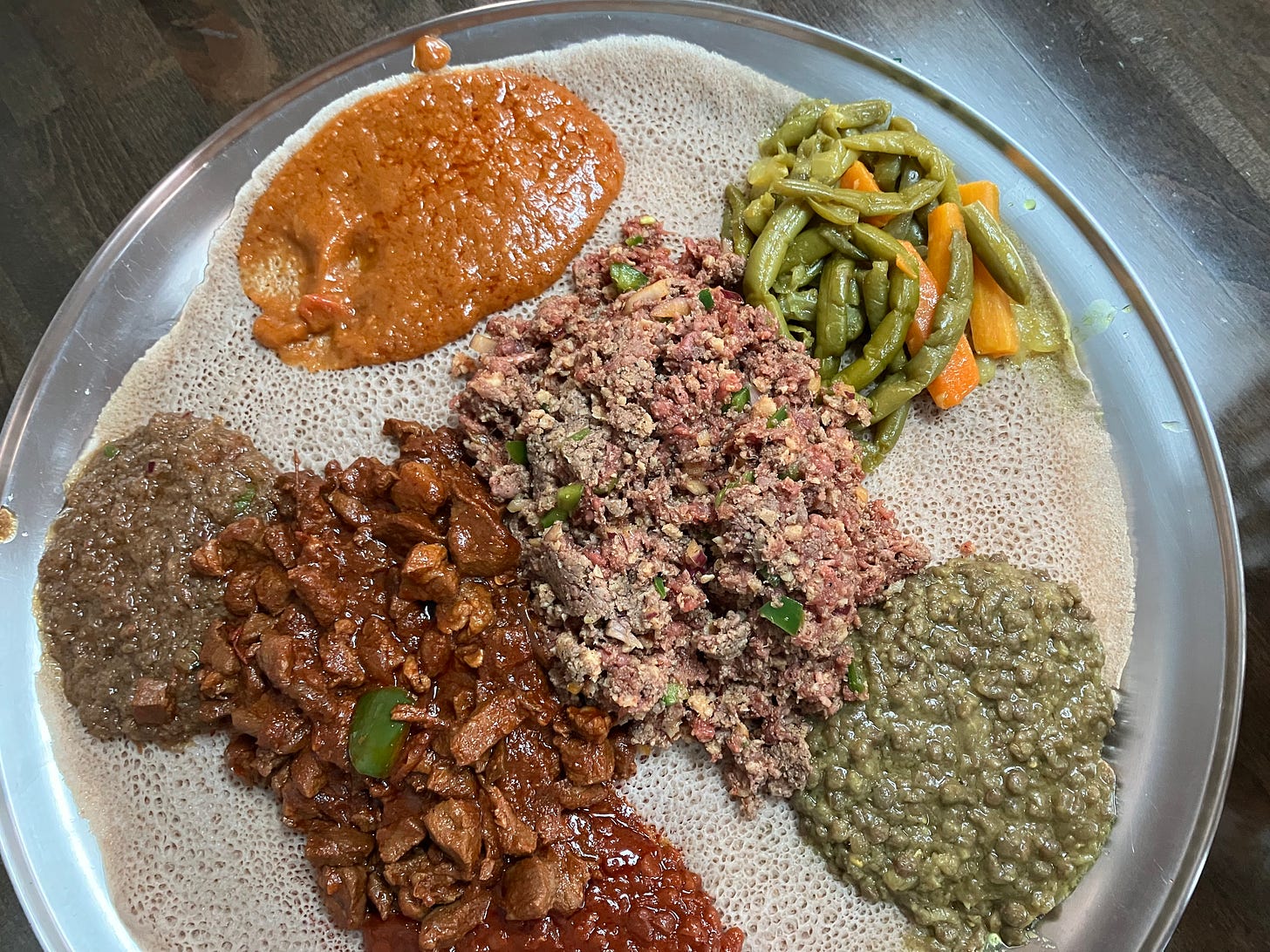
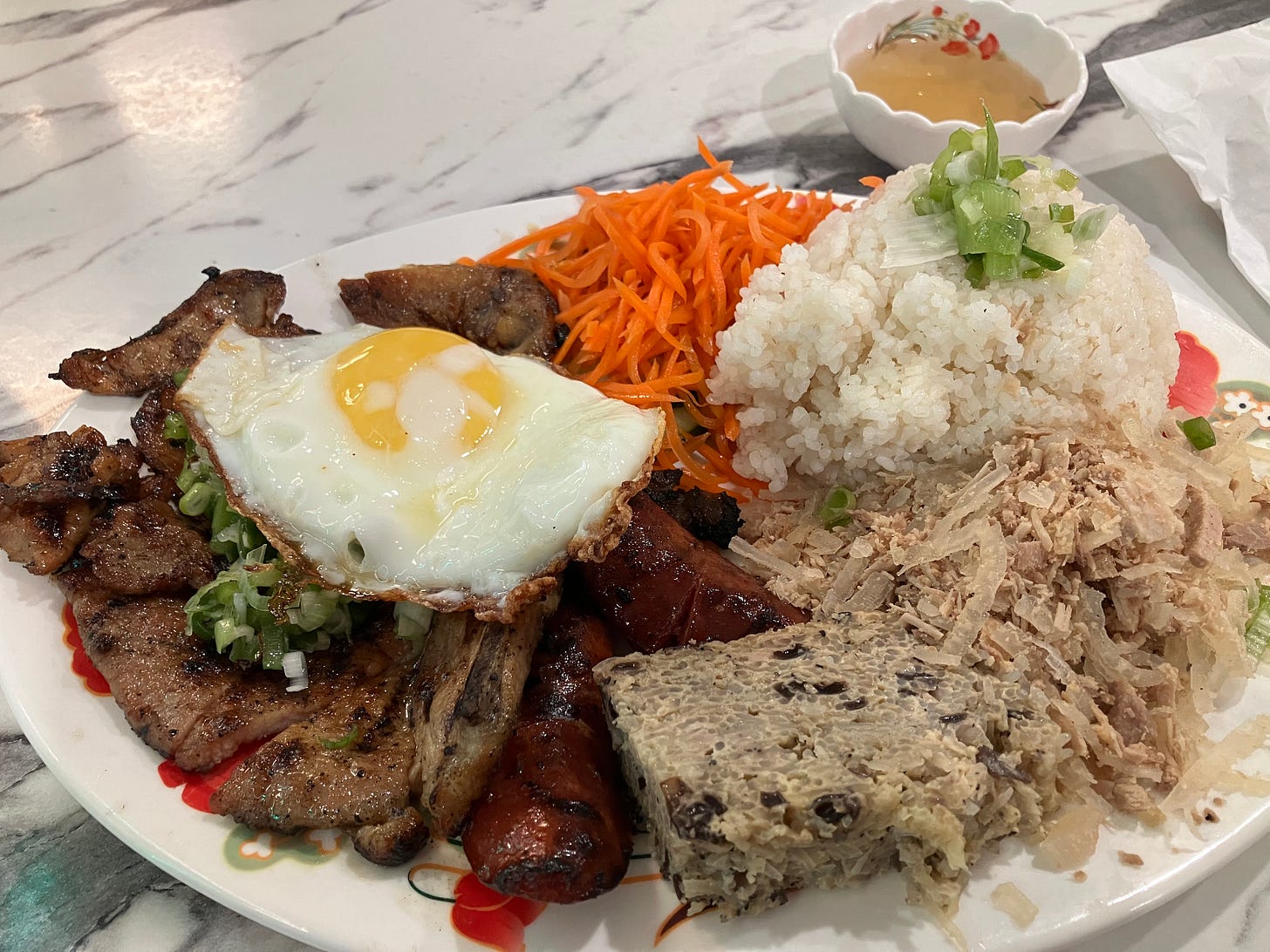
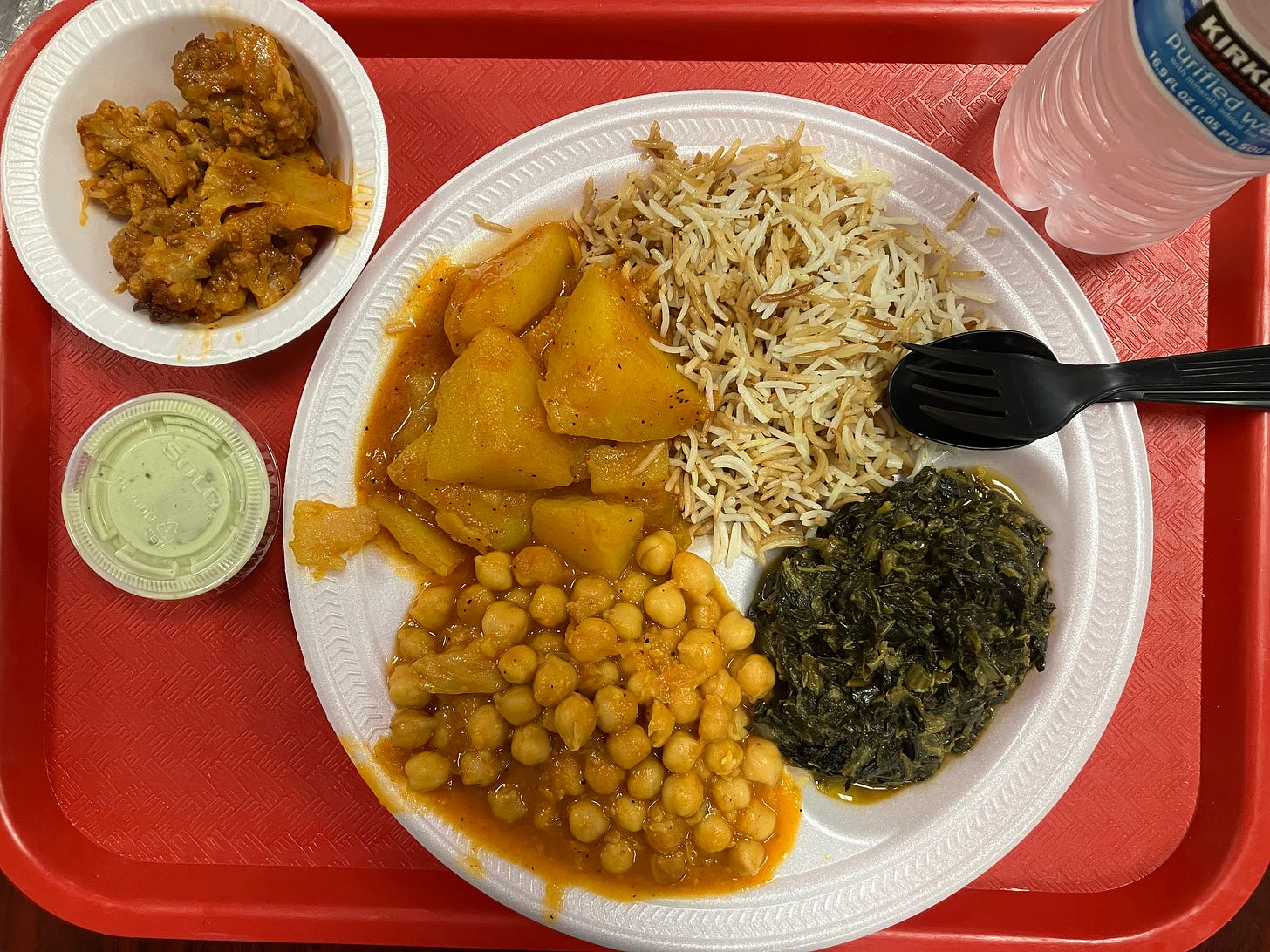
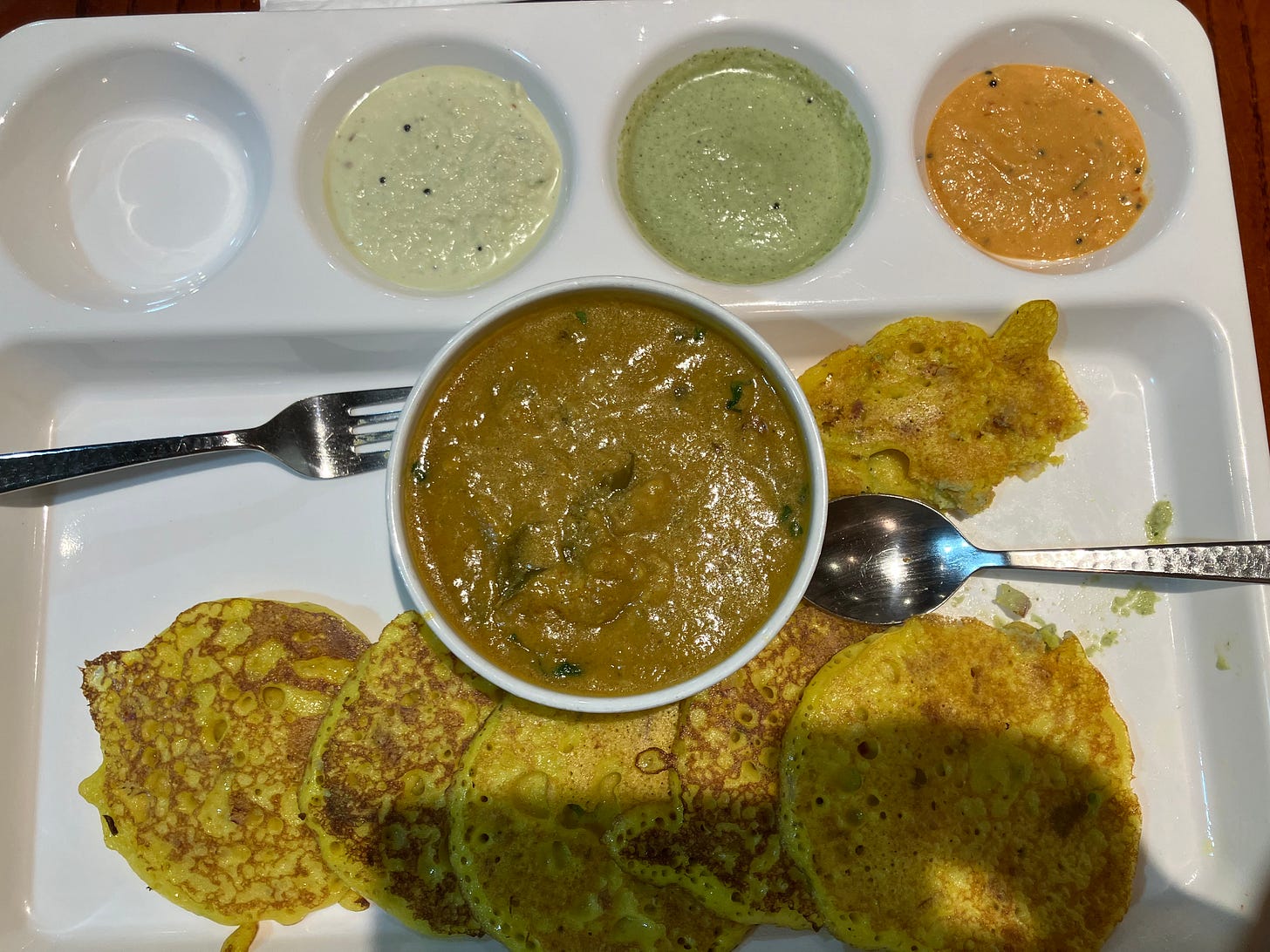
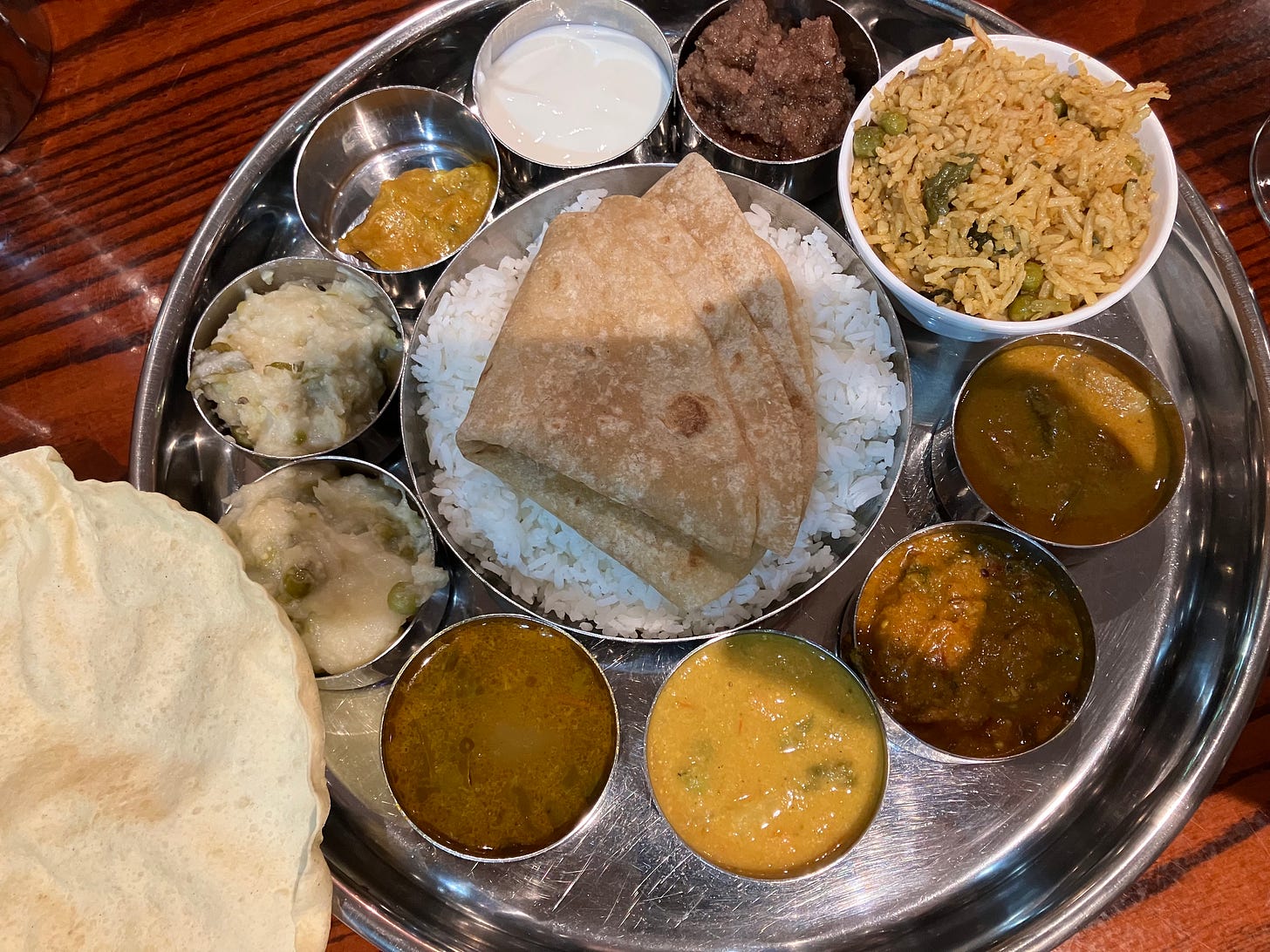
You had me at Lamb Tripe ;) love it xox